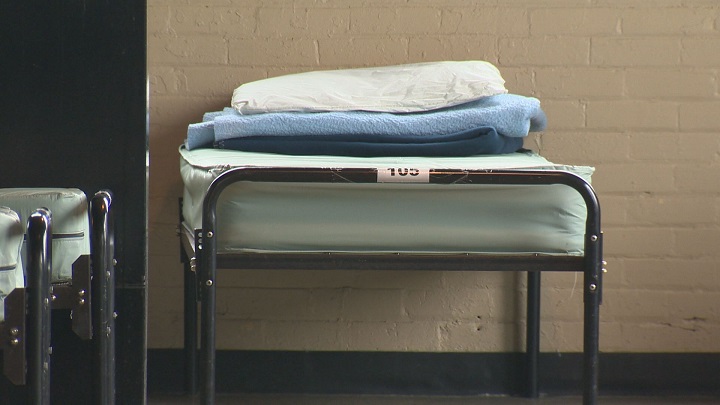While two of Winnipeg’s busiest homeless shelters are running at capacity, the organizations don’t believe a lack of space is to blame for tent cities popping up in the community.

Dozens of people who were living out of tents on the lawn of a West Broadway church are looking for a new place to sleep. They were asked to leave by the church because of a wedding scheduled for the weekend.
At first glance, it might appear a capacity issue at homeless shelters is to blame.
For instance, Main Street Project said in the last 12 months it turned away 300 people from its shelter, which is about 25 people each month. But communications and fund development co-ordinator Cindy Titus said many just prefer to avoid the shelter.
“People who are experiencing homelessness crave the same things you and I might crave,” she said. “They want to be with their friends. They want to be with their community.
“The tent cities offer a bit of personal space for them within their tent and it offers a sense of community also.”
Across the street, Siloam Mission has the capacity for 110 people but on any given night can have between 10 and 30 people on its wait list for a bed.
Siloam is currently adding dozens of new beds to its facility but CEO Jim Bell doesn’t believe it will necessarily stop tent cities from appearing.
“We do believe that the 50 extra beds will go a long way but it’s impossible for me to say whether situations like tent city would hang around,” he said.
“The bigger initiative we’re paying attention to is that there is a need for social and affordable housing.”
The Social Planning Committee of Winnipeg agrees that more affordable housing is needed. Community animator Josh Brandon said there are also scenarios where people are waiting months for a welfare cheque to come in or just can’t access the right help.
“The current phenomena I think really relates to the lack of affordable housing as well as inadequate services for people who need help,” he said.
“There are big backups for accessing mental health services, addiction services.”
Even if everyone decided to stay at a shelter instead of in a tent, Brandon said it doesn’t mean homelessness would be solved.
“It’s also important to remember that a shelter is not a home,” Brandon said. “What we’re trying to achieve is homes for all people in this city.”
The committee will be releasing information on Winnipeg’s current homeless population, including its size and demographics, on June 12.
- Posters promoting ‘Steal From Loblaws Day’ are circulating. How did we get here?
- Canadian food banks are on the brink: ‘This is not a sustainable situation’
- Video shows Ontario police sharing Trudeau’s location with protester, investigation launched
- Solar eclipse eye damage: More than 160 cases reported in Ontario, Quebec




Comments